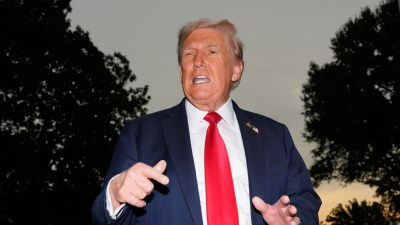Stay updated with the latest - Click here to follow us on Instagram
Timeline: How US-China tariff war escalated ahead of crucial Geneva talks
Donald Trump said this week he is open to cutting tariffs significantly if Beijing makes meaningful concessions. But China has insisted the US must first cancel the punitive duties.
 In recent weeks, US Trade Representative Jamieson Greer said that nearly 50 countries had approached Washington for exemptions from the increased tariffs. (File Representational Photo)
In recent weeks, US Trade Representative Jamieson Greer said that nearly 50 countries had approached Washington for exemptions from the increased tariffs. (File Representational Photo)Talks set for this weekend in Switzerland between senior US and Chinese officials mark the highest-level attempt yet to defuse a punishing trade war that has raged for more than three months, crippling exports and weighing down both economies.
Tariffs between the two countries have reached unprecedented levels — with US duties on Chinese goods at 145 per cent, with cumulative duties on some goods a staggering 245 per cent and China’s retaliatory tariffs at 125 per cent — after a rapid-fire series of tit-for-tat measures since February.

US President Donald Trump said this week he is open to cutting tariffs significantly if Beijing makes meaningful concessions.
The US president wrote: “80% Tariff on China seems right! Up to Scott B” on his social media account on Friday morning, referring to Scott Bessent, the treasury secretary. But China has insisted the US must first cancel the punitive duties.
Here’s a timeline of how the tariff war escalated
| Date | Event |
|---|---|
| Feb. 1 | Trump signs executive order imposing 10 per cent tariffs on China, 25 per cent on Mexico and Canada (later paused for 30 days). |
| Feb. 4 | 10 per cent US tariffs on Chinese goods take effect. China responds with duties on US coal, LNG, and agricultural machinery. |
| Mar. 4 | Additional 10 per cent US tariffs announced (total now 20 per cent). |
| Mar. 10 | China’s new tariffs on US farm goods take effect. Business controls on US firms expand. |
| Apr. 2 | Trump announces 34 per cent tariffs on all Chinese goods for April 9, calls it “Liberation Day”. |
| Apr. 4 | China announces 34 per cent tariffs effective April 10. Adds export controls, suspends key imports, launches antitrust probe into DuPont China. |
| Apr. 7 | Trump threatens additional 50 per cent tariffs if China doesn’t back down. |
| Apr. 9–10 | US tariffs jump to 104 per cent on Apr. 9, China retaliates with 84 per cent tariffs on Apr. 10. |
| Apr. 9 (later same day) | US raises tariffs again to 145 per cent on all Chinese imports. |
| Apr. 11 | China raises tariffs to 125 per cent, effective Apr. 12, and declares no further hikes. |
| May 6 | Talks announced in Geneva. US delegation: Treasury Sec. Scott Bessent & USTR Jamieson Greer. China: Vice Premier He Lifeng. |
On Thursday, Britain became the first country to strike a deal with the US that lowers tariffs on British cars and removes duties on steel and aluminium. In exchange, the UK agreed to open its market to US beef and other agricultural products.
However, analysts said traders were more focused on remarks from Trump about upcoming talks with China, where he signaled a potential softening of the harsh trade measures targeting the world’s second-largest economy.
Trump told reporters he believed the negotiations would be “substantive”, and when asked whether reducing tariffs was on the table, he said, “It could be.”
“We’re going to see. Right now you can’t get any higher. It’s at 145% so we know it’s coming down. I think we’re going to have a very good relationship.”



- 01
- 02
- 03
- 04
- 05



























